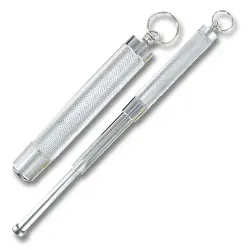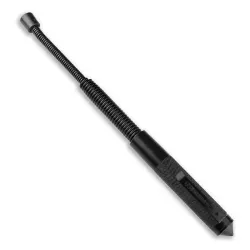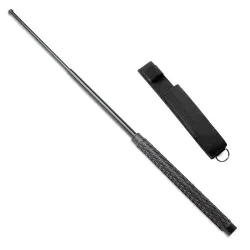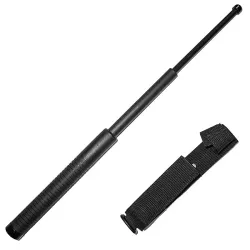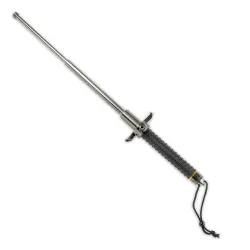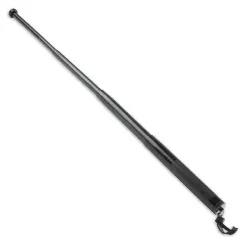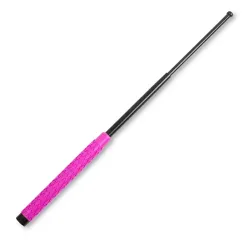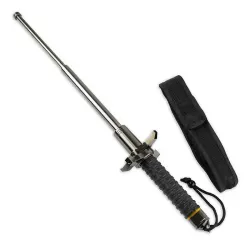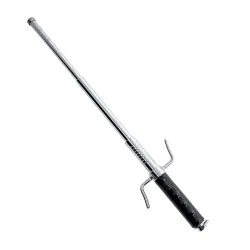History of the Baton: From Police Nightstick to Self-Defense Tool
August 20th, 2025
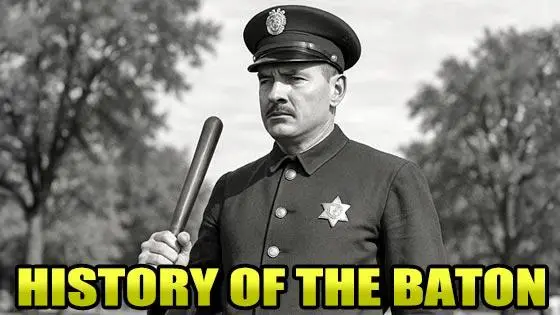
The baton is one of the oldest and most enduring tools of defense. Simple in design yet highly effective, it has evolved over centuries from wooden nightsticks carried by watchmen to the modern expandable batons used by police officers and civilians today. In this post, we'll trace the baton's journey through history and see how it became a practical self-defense option for everyday people.
Ancient Roots of the Baton
For thousands of years, people have relied on sticks, clubs, and staffs for both combat and protection. Early civilizations often used wooden clubs as both tools and weapons. Roman soldiers carried short wooden cudgels for crowd control, while medieval guards used heavy truncheons to enforce order in towns. In Asia, martial arts traditions refined the use of short staffs like the Japanese jo and the Filipino escrima stick, training practitioners to use leverage, speed, and precision strikes. These early tools were simple but effective, and their design laid the groundwork for what would eventually become the modern baton.
The Rise of the Police Nightstick
The police nightstick emerged in the 19th century as organized law enforcement began to take shape. Night watchmen and early police officers carried hardwood batons, often made of oak or hickory, as symbols of authority and as defensive tools. Unlike swords or firearms, the nightstick was non-lethal, inexpensive, and easy to use. By the early 20th century, the wooden baton had become standard issue for police forces worldwide, and its silhouette quickly became iconic.
Different regions even developed their own variations. In the United States, the straight wooden baton became the classic police nightstick, while in some European countries shorter or heavier truncheons were used. The PR-24 side-handle baton, introduced in the 1970s, gave officers a new way to block and control suspects, becoming another symbol of professional law enforcement. Through all these changes, the baton remained tied to policing, both as a practical tool and a visible reminder of authority.
Shifting Materials and Designs
As time went on, the materials and designs of batons began to change. While hardwood was strong, it was also heavy and could splinter under impact. Manufacturers shifted to polycarbonate and composite materials, then later to steel and aluminum. These updates made batons lighter, more durable, and easier to handle.
Steel batons are still considered the most durable and provide the strongest strikes, but they are also heavier. Aluminum models are lighter and faster to deploy, making them popular with civilians and security guards who value speed and convenience. Polycarbonate and polymer batons reduce weight further while remaining strong enough for training and defensive use. Many modern batons also feature rubberized or textured grips to prevent slipping in high-stress encounters.
The Innovation of the Expandable Baton
One of the biggest innovations came in the late 20th century with the introduction of the expandable baton, sometimes called a collapsible or telescopic baton. Unlike a traditional police nightstick, this design could collapse down into a compact size and extend to full length with a quick flick of the wrist.
Expandable batons made it easier for officers to carry a baton on their belt without the bulk of a fixed nightstick. They quickly became popular in law enforcement, security, and military settings around the world. Civilians also saw the advantages: a baton that could stay hidden until needed but still offer the reach and stopping power of a full-length weapon. For many people, this design represented the perfect blend of practicality and effectiveness.
Civilian Adoption for Self-Defense
For civilians, the appeal of a baton has always been its mix of effectiveness and practicality. Unlike pepper spray, which can blow back in your face, or firearms, which come with heavy regulations and serious risks, a baton is straightforward and non-lethal. The presence of an expandable baton can serve as a deterrent, and if used, it provides enough stopping power to create an opportunity to escape.
Smaller models around 16 to 21 inches are common for everyday carry because they are easier to conceal and quicker to deploy. Longer batons in the 24 to 26 inch range provide more leverage and striking force, which is why they remain popular with police and security professionals. Choosing between compact or full-length often comes down to balancing convenience with stopping power.
Training and Martial Arts Influence
Training has also shaped how batons are used today. While you don't need years of martial arts experience to use one effectively, practicing strikes, blocks, and stances improves both confidence and safety. Many martial arts systems incorporate baton drills that mirror traditional short staff techniques, allowing students to refine control, accuracy, and timing.
For civilians, even simple practice makes a big difference. Learning how to extend an expandable baton properly, how to maintain a secure grip, and where to target strikes can mean the difference between a controlled defensive action and an ineffective swing. Training also emphasizes responsible use, and the goal is always to stop a threat and create a safe escape, not to escalate conflict unnecessarily.
Batons in Modern Culture
The baton has also made its way into popular culture. Classic crime dramas often feature police nightsticks as a symbol of law enforcement. Action films highlight the sleek design of telescopic batons, reinforcing their association with professionalism and tactical readiness. Even superhero characters like Batman are depicted with escrima sticks or short batons, keeping the image of these tools alive in entertainment.
These cultural portrayals reinforce what history has already shown: the baton is an enduring symbol of defense, authority, and practicality.
Today's Baton Options
Today, there are more baton options than ever before. Steel expandable batons remain the standard for durability, while lightweight aluminum and polymer versions appeal to those who want speed and portability. Compact models are perfect for concealed carry, while full-size police nightsticks and telescopic batons continue to serve professionals who need maximum leverage.
Whether you call it a police nightstick, collapsible baton, or telescopic baton, the design continues to be one of the most trusted tools for both professionals and civilians.
Conclusion
From ancient short staffs to modern expandable models, the baton has stood the test of time as one of the most practical and reliable tools for defense. Its history spans cultures, professions, and generations, yet its purpose remains the same: to provide reach, control, and protection when it's needed most.
If you're interested in exploring today's designs, check out our full selection of batons here.
You May Also Be Interested In:
- From Jungle Tool to Movie Legend: The History of the Machete
- The Real History of Nunchaku: From Farm Tool to Martial Arts Icon
- The History of the Karambit: From Indonesian Farm Tool to Modern Tactical Icon
- Are Stun Guns Good for Self-Defense? Shock Cane & Stun Baton Tested!
- Tactical Nightstick and Other Lethal Weapons!
- The Evolution of the Bowie Knife: From Frontier Tool to Collectible Icon
- New Baton Video
- New Weapon Wednesday! Balisong, Blades and Baton!
- We Tested the Anti-Grab Stun Baton!
- Spring Loaded Baton and Other Classic Impact Weapons
Leave a Reply






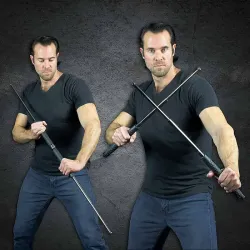
 (5)
(5)
 (4)
(4)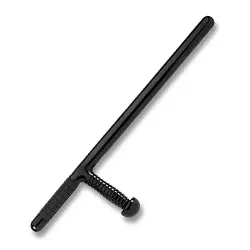
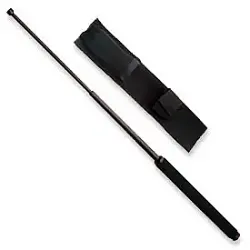
 (1)
(1)